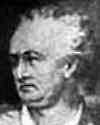 |
| Joseph Aspdin |
Aspdin, Joseph (bap. 1778, d. 1855), cement maker, was baptized on 25 December 1778 in Hunslet, Leeds, the eldest in the family of five sons and one daughter of Thomas Aspdin, bricklayer of Hunslet, and his wife, Mary. Aspdin followed his father's trade of bricklayer and builder at Briggate, Leeds. On 21 May 1811 he married Mary Fotherby at Hunslet. They had two sons and five daughters, two of whom died in infancy.
Aspdin's experiments with cement making led him to apply for a patent, which was granted in June 1824, for ‘An improvement in the modes of producing an artificial stone’—the first patent to be granted which used the term ‘portland cement’.
Cement is the term in common use for a powder which hardens when mixed with water and is used to bind together aggregates of gravel and stone to produce concrete. In the second half of the nineteenth century portland became the most popular type of cement and it has been used in vast quantities for building and construction in all parts of the world. In Aspdin's day cement manufacture was undergoing relatively rapid development and many experimenters were working in the field. Aspdin took the name for his patent material from portland stone, which had a high reputation and provided a standard with which artificial products would naturally be compared. To produce the high strengths associated with modern portland cement it was necessary to burn at high temperatures finely pulverized lime with clay in certain proportions, and grind the product. It is uncertain when Aspdin made this breakthrough. He may have used a glasshouse kiln, which would be more likely to reach the high temperatures required for successful burning of portland cement than the lime-burning kiln used by his competitors. There was a glassworks at Hunslet at this time and a glassworks and foundries at Wakefield.
Aspdin set up a partnership in 1824 with a neighbour, William Beverley, as ‘patent portland cement manufacturers’, operating from Leeds and Wakefield, to where Aspdin moved, and later expanded to an agency at Liverpool. The partnership ended in 1837, and Aspdin recommenced manufacture with his two sons, James and William, at a nearby site in Kirkgate, Wakefield, and took James into partnership three years later. When Aspdin retired in 1844, James continued the business.
William Aspdin moved to London in 1841, forming a succession of partnerships to make portland cement at Rotherhithe, Northfleet, and Gateshead upon Tyne in England, and Hamburg in Germany. It appears that his father deliberately excluded him from the family business, but despite this William was an enthusiastic advocate, often with exaggeration, of the superior qualities of portland cement.
Aspdin died at his home in Hansons Terrace, Wakefield, on 20 March 1855 and was buried in St John's churchyard, Wakefield. A tablet to his memory was unveiled in Leeds town hall in 1924.
(Source: http://www.oxforddnb.com/view/article/37129)
Concrete is often derided as a building material because of
the poorly designed and un-aesthetic buildings that have been built out of from the 1950s onwards (both in the tower blocks of the Communist East and the shopping centres of the Capitalist West). However that is not the fault of concrete, or
the men who conceived it, but rather the architects who made poor use of it. It is an outstanding and versatile building material as we can see practically everywhere, both indoors and outdoors. It can be manufactured easily (Aspdin made the first Portland cement in his kitchen), shaped easily to suit many many purposes easily, and easily recyclable when it's lifecycle has ended. You can't ask for much more than that from a building material!
It should also be noted that while Aspdin is credited with being the inventor of Portland Cement he is one link in a long chain of men who made their own unique innovations (as personal, individual discoveries) and thus contributions to the development of cement, men who lived before Aspdin and came after him as well, one link in an important chain that stretches on to this day and potentially in to the future.
[End.]
It should also be noted that while Aspdin is credited with being the inventor of Portland Cement he is one link in a long chain of men who made their own unique innovations (as personal, individual discoveries) and thus contributions to the development of cement, men who lived before Aspdin and came after him as well, one link in an important chain that stretches on to this day and potentially in to the future.
[End.]
No comments:
Post a Comment